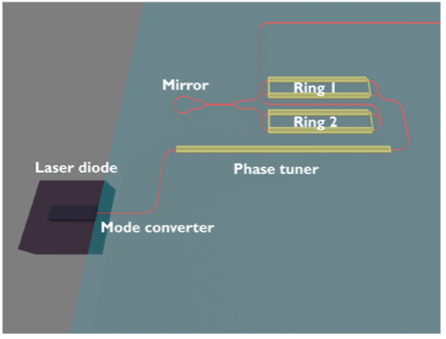Summary
A superconducting quantum interference device (SQUID) is an extremely sensitive magnetic field detector. Microstrip SQUIDs can amplify weak radio frequency (RF) signals, a capability that makes them attractive as a potential alternative to the cryogenic semiconductor-based RF amplifiers that are available commercially, but at a cost of approximately $6,000 each. The challenge of using microstrip SQUIDs has been that they are static sensitive and can be overwhelmed by external noise. By tweaking microstrip SQUID design to achieve the quantum noise limit, and by packaging the technology into a more practical configuration, our team is working to reduce the cost of the SQUID approach by an order of magnitude. We also are working toward a much higher performance amplifier, with voltage noise reduced ten fold.
In the course of our work, we expect to fabricate “user-friendly” SQUIDs – packaging the RF filtering, RF-SQUID, and amplification together – such that a non-specialist could easily run the amplifier with the ease of running a conventional semiconductor amplifier. In addition to producing a practical, high-performance and economical amplifier, we believe that our work will facilitate multiple new quantum readout applications, as well as interesting fundamental physics.
Related Content

Topological Quantum Computing on Majorana Platform
Full-scale quantum computing will require the capability for error-tolerant quantum information processing.
January 11, 2017

Developing Tools for Quantum Characterization and Validation
Summary Coherence is essential for quantum computation; yet it introduces a unique sensitivity to any imperfections in hardware design, control systems, and the operating environment. Overcoming these sensitivities requires a hierarchy of strategies, ranging from optimization of the hardware architecture to software solutions including quantum error correction. Randomized Benchmarking Protocols are an important family of […]
October 3, 2017

Scanning Tunneling Microscopy of Quantum Materials, Devices and Molecules
Summary This project advances our ability to characterize and study novel quantum materials, quantum devices, and even individual molecules at the atomic level. By combining Non-Contact Atomic Force Microscopy (NC-AFM), Scanning Tunneling Microscopy (STM) and scanning gate methods, we correlate spatial information with transport properties and can locally manipulate charge, spin and structural states. […]
January 28, 2019

Visible wavelength external cavity diode lasers in photonic integrated circuits for atomic technologies
Atoms can be controlled by manipulating their internal states using agile, quiet and reliable laser sources. An external-cavity diode laser (ECDL) is a crucial enabling technology to realize such laser sources since it allows for the narrowing of the linewidth of a laser diode and precise tuning of the laser frequency. This project aims to […]
April 19, 2023

